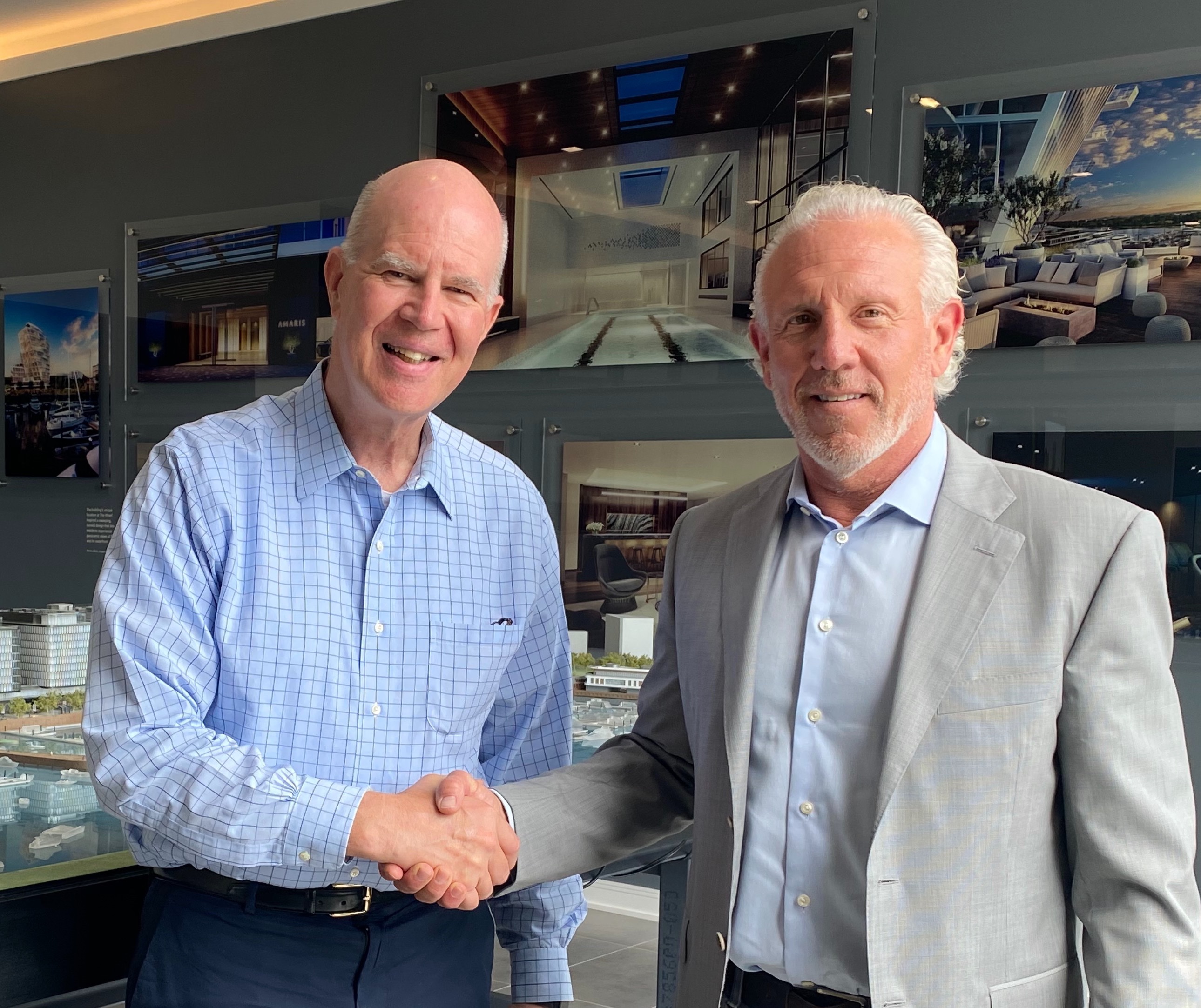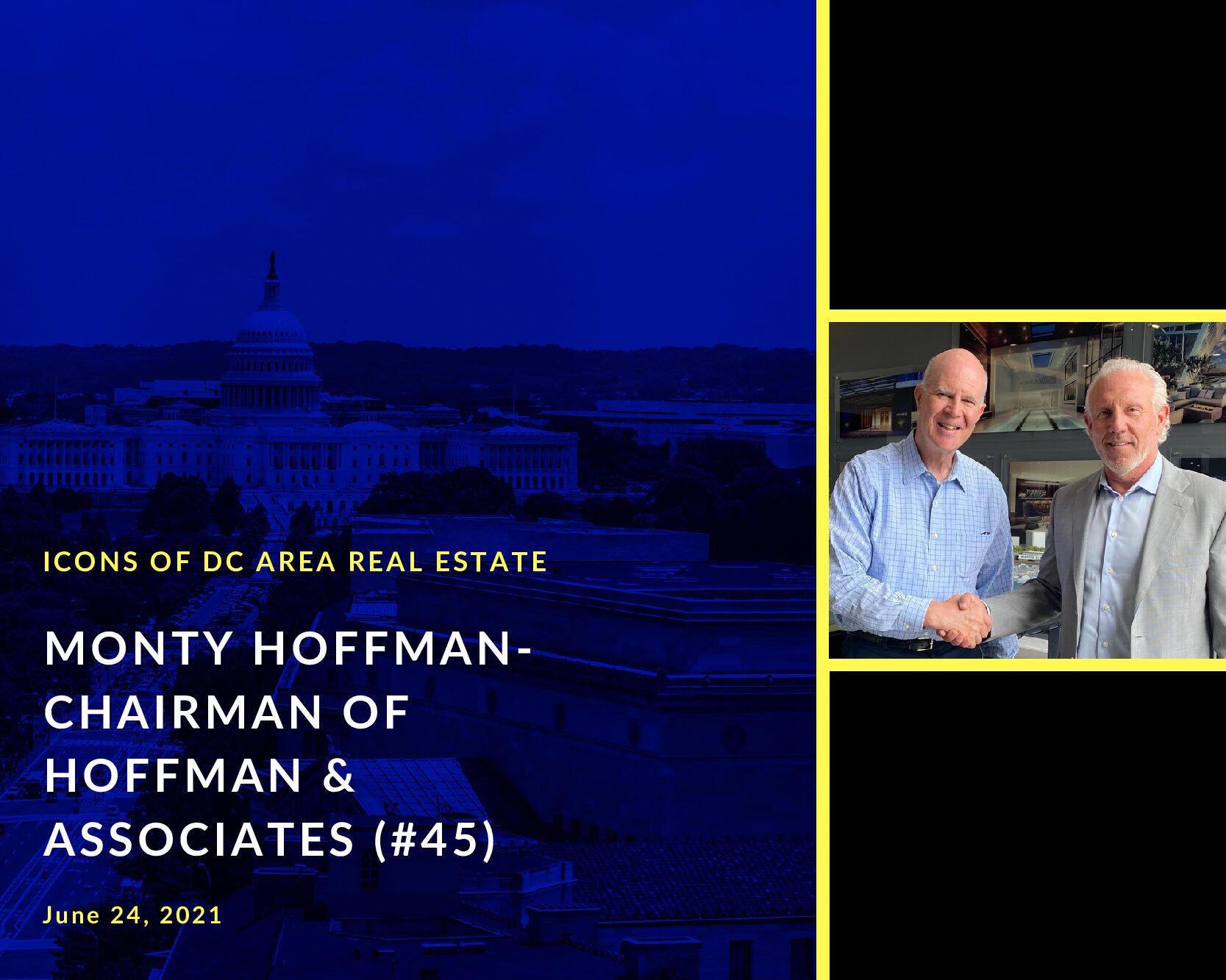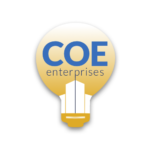

Bio
Monty Hoffman formed Hoffman & Associates in 1993 with a single townhouse conversion and has since then transformed the company into a market leader of real estate development in the Washington, DC, metro area and beyond. With more than 30 years of experience, Monty actively leads the company’s business development and market strategy, as well as the design initiatives for every Hoffman project.
Monty has been recognized in Washington’s SmartCEO’s Future 50 list and the Washington Business Journal’s Power 100. He is a founding board member of the DC Students Construction Trades Foundation, which provides educational and apprenticeship opportunities for District students interested in design, engineering, and construction. He served on the DC Public Schools Engineering Advisory Board and is a current board member of the Federal City Council and Southwest Business Improvement District. Monty graduated from the University of Pittsburgh at Johnstown with a Bachelor of Science in Civil/Structural Engineering Technology. He is married with three children and lives in Potomac, MD.
Show Notes
- Role- Strategy and deal making. Mentoring and coaching. What’s the next niche and big thing? Figuring out how to allocate resources (4:00)
Origins and Education
- Grew up in an extended family with almost 60 cousins (5:00)
- Spent time in the Detroit area initially- Taylor, MI and Dearborn, MI
- Moved to Pennsylvania when he was 14 (6:30)
- Dad was a bricklayer starting in Detroit area and then moved back to PA to start his own company (6:40)
- He played with building materials as a kid and went to job sites with his Dad (7:20)
- He learned “smack” from the workers in his Dad’s company (7:40)
- Driving a dump truck and other equipment at 15 yrs. old (8:30)
- Mom was a homemaker and he lived in a blue collar environment (9:00)
- College- Univ. of Pittsburgh, Johnstown campus– paid his way through college (9:45)
- Worked a summer as a mine worker (10:15)
- No coincidence that he got straight As in school after that work (10:45)
- Studied Civil Engineering (11:30)
Initial Employment
- Worked for a company that build smokestacks (Pullman) to pay off a college loan (11:50)
- 600 foot high smokestacks on nuclear power plants (12:10)
- Story about butchering an antelope on the job site (12:45)
- Moved to DC in 1984 and lived with buddies and interviewed and joined the Donohoe Company (13:50)
- Project Engineer then Project Manager (14:30)
- 1620 L St. NW- built over transformer with huge trusses and tells story about getting them into the City (15:20)
- Client was Mohammed Hadid (16:15)
- Bought a property in West Springfield, VA and his Dad came down from PA to help him build his home, which was a modular home (16:40)
PN Hoffman Beginnings
- Decided to start his own company in 1993 by buying a row house (1605 16th St. NW) with his partner, Pete Nazelrod, a fellow Donohoe colleague. They sold out the project and made $300,000 from the proceeds (16:35)
- Bought two more properties in the 16th St. area (19:20)
- Dale Denton Real Estate
- Macro news was negative, but the 17th St. area was strong as was the area to the east (19:50)
- He began buying actively doing their own construction
- Mostly existing properties for renovations
- Logan One and Two– Paid $300,000 and the properties were in disrepair
- Understood costs of construction, but wanted to learn market opportunities and he decided upgrades like marble countertops and hardwood flooring (22:20)
- Condo development generated cash for living and the mentality was to keep cash oriented and not long term until enough capital was accumulated (23:20)
- In 28 yrs. he never lost money as he was conservative in his investment thinking. (24:40)
- In 2007 he was up to 85 people on his team (25:15)
- Initially used 3rd party marketing and sales until about four years into the company’s tenure when they brought their own sales team in house. (25:45)
- Construction centric company (26:30)
- Partners- Gewirz family, Jon Gerstenfeld, Gary Squire, Doug Firstenberg (26:50)
- Brought technical and construction experience to partnerships
Evolution to Ground Up Development
- In 1998 he began building ground up projects and was more comfortable with doing it than adaptive re-use projects (27:45)
- When he pivoted to vertical construction he didn’t go back to adaptive re-use (Park Hill project) (28:00)
- Condo centric project developer- makes sense to him and allows for diversification (29:00)
- About 2000 he pivoted to income producing properties to balance his portfolio
- Attacks product liability issue from a technical standpoint due to his attention to details and has been careful in this effort and has never had a lawsuit against him regarding potential latent defects (31:00)
- On a project he is building at the Wharf- will beta test a property for 30 days before allowing residents to move into the project. (33:00)
- Quality control- John Bradley (33:30)
- Chase Point– Competed with Doug Firstenberg on the project and lost the deal, yet Doug called him out of the blue to ask him to JV the project with him on the condo development. Doug’s expertise was finance and Monty handled the construction and design. (33:50)
- Lot 31 pursuit with Doug and won the project- Discussed the redeployment of traffic on Woodmont Ave. in Bethesda (36:00)
- Plan to choke down the intersection to help with pedestrian movement (37:00)
- Union Row– First major mixed use project (38:00)
- Winged it on mixing retail and residential and it worked, but there were challenges (38:50)
- Constitution Square– Only a construction manager for the project (40:10)
- The Mather Building– City project including affordable housing with retail on the ground floor (41:45)
- The Alta (first LEED Certified residential project) (42:00)
The Wharf
- Anacostia Waterfront Commission RFEI (Request for Expressions of Interest) for the Southwest Waterfront story (The Wharf DC) (43:10)
- Tony Williams and Andy Altman were the visionaries for the location (44:00)
- He was advised to pursue the opportunity and he initially rejected it (45:10)
- However the economy started dropping and developers were betting futures and he wouldn’t do it (45:30)
- When he was missing projects due to his discipline so his thought process changed and he decided to pursue the Waterfront project and found his initial partner, Bill Streuver (Streuver Brothers) (46:10)
- People did not want a “formula” project or “lifestyle center.” (47:30)
- Neighborhood first compared to other firms who took a different approach (47:55)
- Team included Perkins Eastman (Stan Eckstut)- Project was “messy” in a good way (48:20)
- Fred Kent (Project for Public Spaces) (48:50)
- Chip Glasgow was zoning counsel (49:45)
- City owned 60% of site and he needed site control to go through the entitlement process (50:50)
- JBG controlled the “Channel Inn,” one of the key sites and he was in discussions with Ben Jacobs who managed that site for JBG (51:40)
- He continued assembling and eventually JBG agreed to sell the site to the Hoffman partnership (52:30)
- He lost Streuver Brothers to bankruptcy in 2009 during the project’s inception and Monty had to go it alone for three years (53:30)
- He found Madison Marquette to partner with him after several discussions. They brought a significant amount of capital in 2012 to help with sourcing JV capital (55:10)
- Wanted to do “the Big Bang Theory” (56:30)
- Raised equity from PSP (Canadian pension fund)- Matched imputed value of the site and the investment by Hoffman Madison Marquette partnership (57:50)
- Not all of the project was in the initial financing process and he decided to sell off the Intercontinental Hotel site to Carr Companies (1:00:00)
- PSP agreed to fund the project including “The Anthem” theatre and subsequently they stepped up for the rest of the project (1:01:00)
- Knew about flood plain issues and figured out the best ways to keep out water on the waterfront going two stories down (1:02:30)
- WMATA tunnel had to go through the site and under the Washington Channel. Important to keep the tunnel from raising, so had to figure out the best way to contain it (1:03:30)
- Vibration was an issue and this would be a problem for the building- A $10MM solution of neoprene padding to alleviate noise and vibration from the Metro trains (1:05:50)
- Balfour Beatty dealt with the WMATA tunnel in Phase 2 construction (1:07:00)
- Phase 1- Anthem, 1000 Main- Office, 800 Main- Office, Intercontinental Hotel- , Apartments, Via Condos, Retail (30 types of restaurants)- 140,000 s.f., Hyatt House & Canopy (1:08:00)
- Phase 2- Office- Williams & Connolly (1:09:40)
- Retail held up well- reconstituting several retail tenants (1:11:15)
- Wanting more experiential retail (1:12:00)
- Need for profit tenants (1:12:45
- Hotels coming back but need more time)
- Phase 2- Public realm is a great congregating area (1:13:00)
- Wants to integrate Phases 1 & 2 to be comprehensive (1:15:00)
Hoffman & Associates
- Hoffman Company- Build Cool Things (1:15:50)
- Improving Community (1:16:00)
- Operate as a team
- Services- Sales of condominiums, Construction, Asset Management, Retail Property Management, Public realm management (1:16:30)
- Bao Vuong– Alumnus (1:18:20)
- Rob Steward– Raleigh project
- John Florian brought him to Raleigh after Phase 1 of the Wharf (1:19:00)
- West Falls Church project– initially partnered with EYA, but now taking over (1:20:00)
- Looking at Richmond, VA
- Church projects– JV with church to redevelop the project for them (1:21:00)
- Personnel issues
- Pandemic allowed people to work from home, but they stepped up in connecting (1:21:50)
- He had weekly calls to inspire (1:23:30)
- TOD is limited in large markets as “low hanging fruit” has been picked and now secondary and tertiary cities offer opportunities going forward (1:25:30)
- Entitlements are much simpler in smaller markets (1:27:00)
- Three year lead times cause concerns
- Likes complex projects like The Wharf, but probably only one like that at a time
- Lost money in Philadelphia at Penns Landing redevelopment opportunity (1:29:00)
- Sustainability since the pandemic started (1:30:00)
- Changing floor plates to adapt to remote working
- HIs site allows for 10′ ceiling heights with more outside air
- Cogeneration plant for heat recapture
- Proactive on diversity aspects in company (1:33:30)
- Strong ratios of women and minorities that developed organically, but he is still conscious of inclusiveness
- He looks at trends and we are making great strides and going the right direction
- Lens for opportunities (1:35:30)
- More entrepreneurial and opportunistic than JBG Smith and Stonebridge due to focus differences
- Risk mitigation- Discipline of rudimentary of details and search out the 5% of problems to be proactive about problems primarily from the cost side (1:37:00)
- The market is my boss- Hedges the market by turning down situations that are perceived too risky. (1:38:15)
- Scour competition and how market reacts to situations and has a “hook” to opportunity
- Hope to have enough contingency and a “Plan B” to exit, if necessary (1:39:30)
Personal Priorities & Philosophy
- Family- Wife and 3 children- enjoy their company (1:40:00)
- Work- Mentoring others for leadership (1:41:00)
- Mark Dorigan, CEO
- Sean Seaman , COO
- Nate Hoffman– Son who works on a new project
- Philanthropy plan- His wife and he want to pick that up after finalizing projects (1:44:00)
- Wants to do something of value
- Work- Mentoring others for leadership (1:41:00)
- Surprising events (1:46:00)
- Awarded a project of the year early in his career at the Washington Business Journal
- Three year travails while trying to find new partners at The Wharf
- Advice to 25 yr. old self- Quit worrying and you’re up for a “hell of a ride” (1:48:00)
- Some answer will come about
- Billboard statement- “Make Rum Not War,” “Do unto other as other people do unto you.” (1:49:00)
Postscript
- Colin Madden offering perspective (1:50:15)
- Blue collar background
- Story of John Coe’s summer in a factory
- Investment philosophy-
- Constant relentless attention to detail compared to Peter Kaufman ideas
- When to get equity and how
- The Wharf
- Significant financial and construction issues

